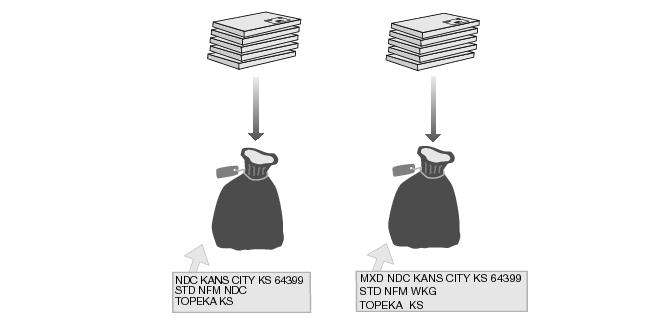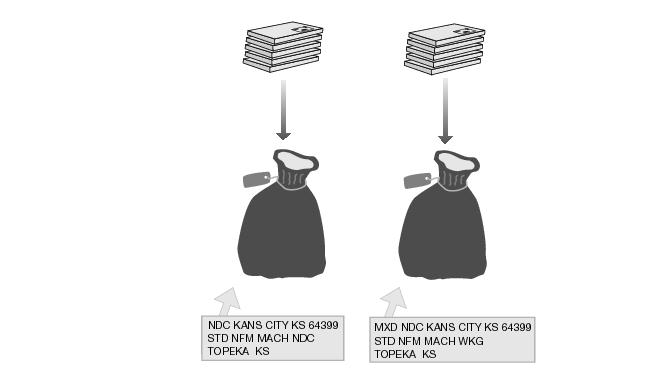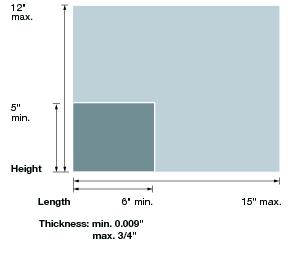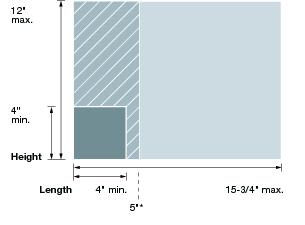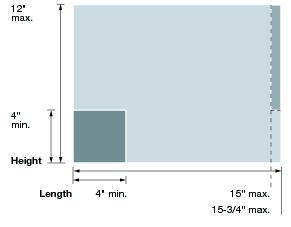|
|
|
|
|
|
| |
Quick Service Guide 440dCommercial ParcelsStandard Mail Not Flat-Machinable PiecesApril 17, 2011 Related QSG
703, Standard Mail Nonprofit Eligibility Physical Standards (401)
Maximum weight: less than 16 ounces. For an overview of the physical standards for Not Flat-Machinables (NFM), see Quick Service Guide 401. Prices and Fees (443.1.0)
For a complete listing of commercial Standard Mail prices, see Notice 123–Price List.
Destination discounts apply to mail prepared as prescribed by USPS and addressed for delivery within service area of destination NDC/ASF, SCF (5-digit and SCF), or delivery unit (5-digit only) under 346.2.0. Annual presort mailing fee applies. Content (443.2.0) Not Flat-Machinable pieces containing mailable items not required to be sent using First-Class Mail can be sent using Standard Mail. Standard Mail is typically used for advertisements, flyers, and catalogs. Additional content restrictions must be met for authorized nonprofit mailers (703.1.0). Eligibility Standards (443) Mailings of 200 or more addressed pieces (or 50 pounds of addressed pieces), sorted and marked as described below. All pieces must meet the physical standards for NFMs in (401). Pieces are eligible if not required to be mailed at First-Class Mail prices or not eligible for Periodicals prices. Nonprofit prices require specific authorization (703.1.0). Each piece must include a complete delivery address with correct ZIP Code or ZIP+4 code. A certified process must be used at least once a year to ensure accuracy of 5-digit ZIP Codes. Each piece must bear a correct readable barcode under 708.4.0 or 708.5.0 as applicable, except if prepared in 5-digit/scheme containers or on 5-digit pallets. Pieces under 6 ounces may have a POSTNET (708.4.0), an Intelligent Mail package barcode, or GS1-128 routing barcode (708.5.0). Pieces 6 ounces or more must have a GS1-128 routing barcode or an Intelligent Mail package barcode. For barcode placement, see 402.4.0. Addresses on all pieces must be updated within 95 days before mailing through a USPS-approved address update method (e.g., ACS, NCOALink, or the appropriate ancillary service endorsement (except Forwarding Service Requested) under 507.1.5.3). For an overview of the Move Update standards, see Quick Service Guide 230a. Postage Payment and Documentation (444) Precanceled stamp (604.3.0), meter (604.4.0), or permit imprint (604.5.0). Additional standards apply to mailings of nonidentical-weight pieces. Regular: PS Form 3602-R or approved facsimile. Nonprofit: PS Form 3602-N or approved facsimile.
Mail Preparation (445) Mark each piece “Not Flat-Machinable” or “NFM” in the postage area (402.2.0) or in the optional endorsement line. Additional markings required:
For pallet preparation, see 705.8.0. Prepared in sacks (unless palletized). Palletization is preferred, see Quick Service Guide 705d. Enter and Deposit (446) Mailing entered at an acceptance point designated by USPS. Preparation
|
||||||||||||||||||||||||||||||||||||||||||||
